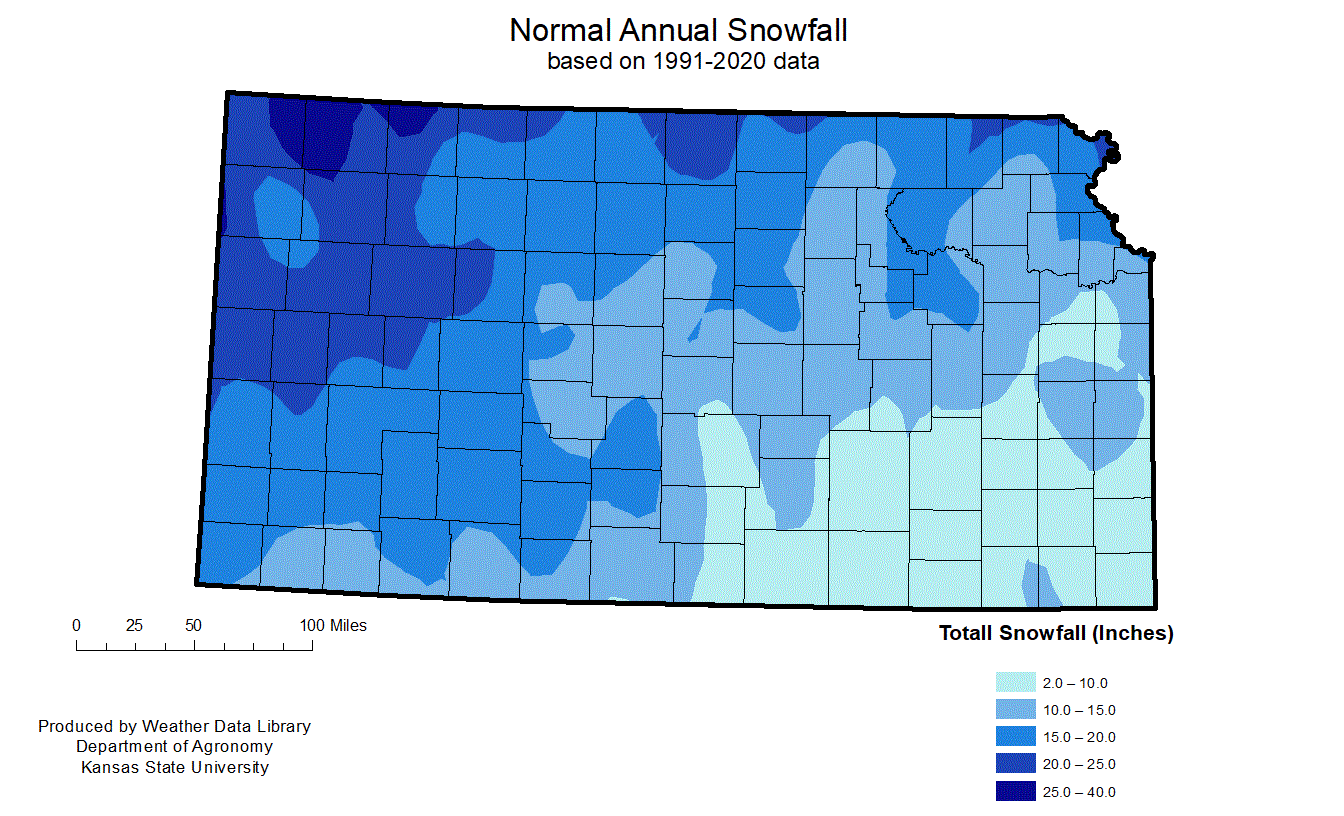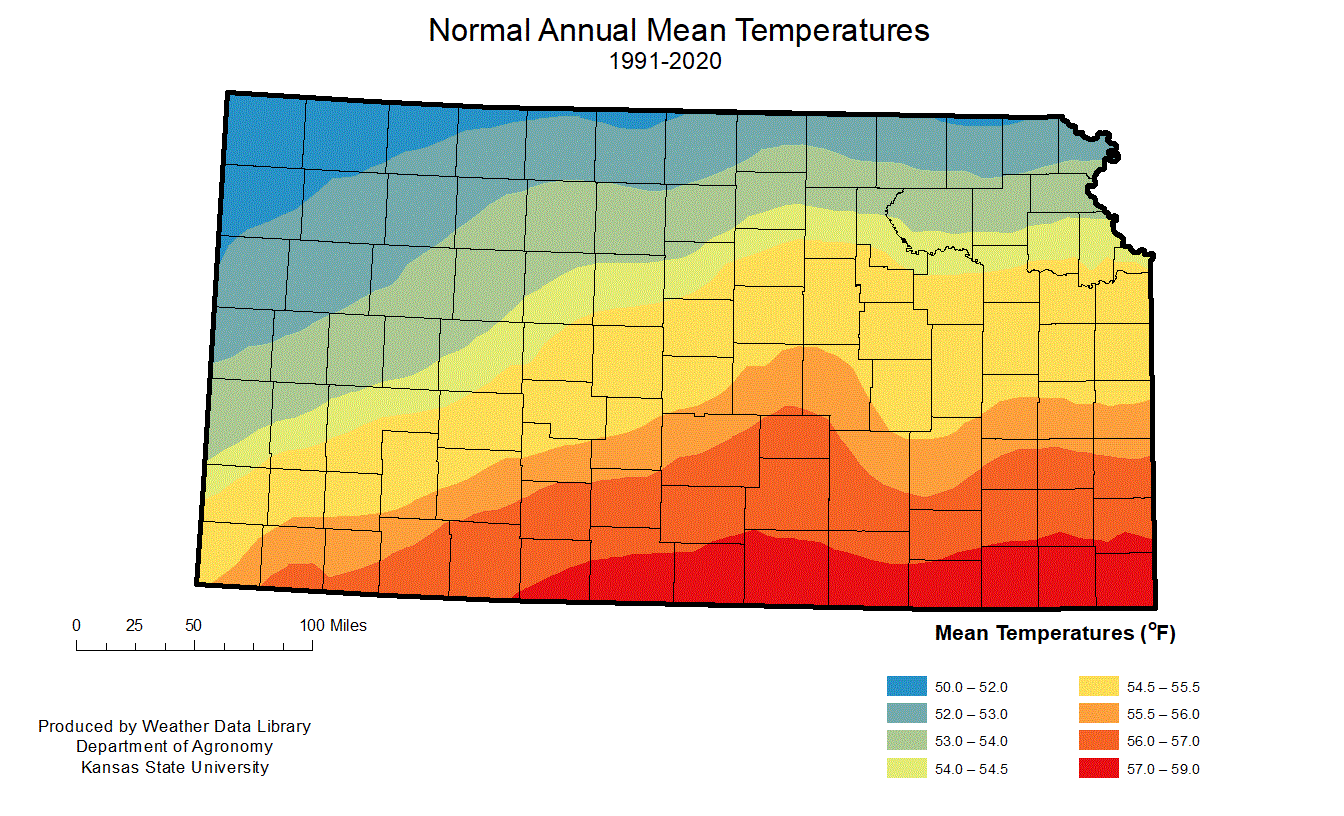Precipitation is one of the defining features for climate. Annual precipitation, based on the 1991—2020 normals, vary from more than 45 inches in southeastern Kansas to less than 18 inches in southwestern Kansas. In the western half of the state, the major gradients fall on north to south lines. As you move east, there is tilt in the gradients. This southwest to northeast pattern is largely influenced by systems moving northeast from the Gulf of Mexico.

The normal annual snowfall shows a pronounced gradient from northwest to southeast. Winter moisture in the southeast is more likely to come in the form of rainfall rather than snowfall. Highest normal annual snowfall is in the 28 to 42 inch range, while the lowest annual normal values are less than 12 inches. Amounts vary widely from year to year. Goodland, with a normal annual snowfall of 35.5 inches, has a range from 86.6 inches in 1984 to no snow at all in 1923. Columbus, with a normal annual snowfall of 9.8 inches, has a range from 43.5 inches in 1896 to no snow in 2007.

Temperatures more closely follow an north-south pattern than rainfall, which has an east-west gradient. The annual mean temperatures range from around 58 °F along the Oklahoma border to less than 52 °F in the northwestern corner of the state.
